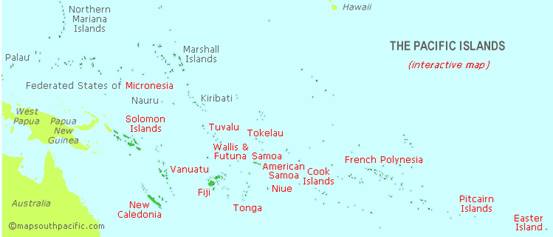Pitcairn Islands stamps
P=have O=don’t have it
http://www.mapsouthpacific.com/pacific/index.html
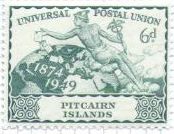
Scott: #15P
Issued: 10.10.1949
UPU Issue (Common Design Types)
Inside #15: Stamps on Envelopes
![[Local Motives, type HE]](Pitcairn%20Islands_image006.jpg)
Scott: #171AO
Issued: 1.10.1981
Local Motives
Inside #171A: Burning obsolete stamps
Thanks to Dragan Buškulić
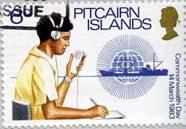
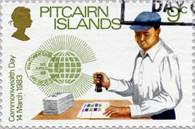
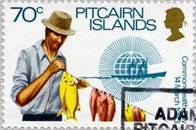
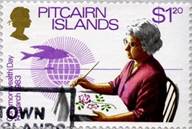
Scott: #221-224O
Issued: 14.3.1983
Commonwealth Day
Inside #222: Stamps on Envelopes
http://www.commonwealthday.co.uk/stamps_pitcairn_islands.htm
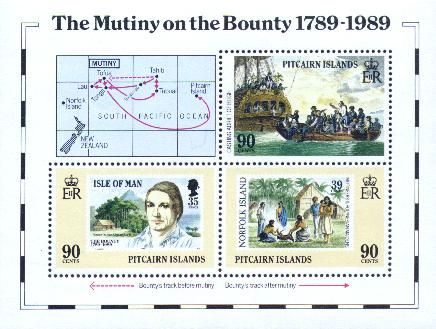
Scott:#322O,
#322a, #322bO, #322cO
Issued: 28.4.1989
Pitcairn Island Bicentennial
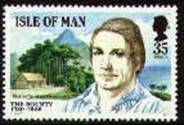 Inside #322b: Isle of Man #393P (Isle of Man)
Inside #322b: Isle of Man #393P (Isle of Man)
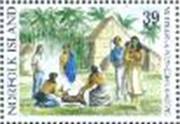 Inside #322c: Norfolk Island #453O
Inside #322c: Norfolk Island #453O
Released
on 28 April in conjunction with the Pitcairn Islands the
Norfolk Island and Isle of Man Postal Administrations was a souvenir sheet
which features one stamp illustrating Lt. Bligh and his party being cast
adrift, another (being an Isle of Man stamp on a Pitcairn stamp) showing
Fletcher Christian, and the third (a Norfolk Island stamp on a Pitcairn stamp)
depicting "mutineers and Polynesian maidens".
The Isle of Man (NZ
$2.40) and Norfolk Island (NZ $3.20) souvenir sheets, featuring the same three
designs in a different order but in the same format, were also produced.
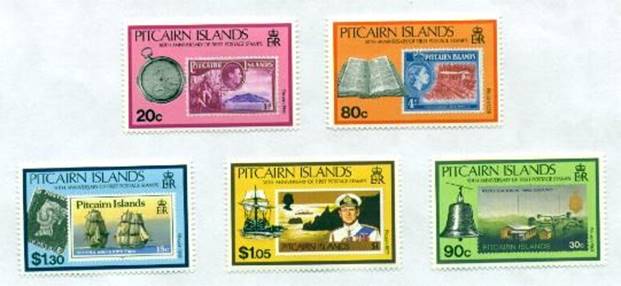
Scott:#338-342P
Issued: 15.10.1990
50th
Anniversary, Pitcairn Island Stamps
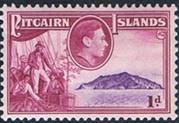 Inside #338: Pitcairn Islands #2O
Inside #338: Pitcairn Islands #2O
1940 Fletcher Christian
and his fellow mutineers look towards Pitcairn (With Bounty Chronometer).
 Inside
#339: Pitcairn Islands #31O
Inside
#339: Pitcairn Islands #31O
1957
The Schoolteacher's house; this design first released on 2 July 1957 carried
the incorrect inscription "Pitcairn School". It was re-issued on 11 May 1958 with the correct inscription
(With Bounty bible).
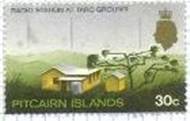 Inside #340: Pitcairn Island #108O
Inside #340: Pitcairn Island #108O
1969
Government Radio Station at Taro Ground (With Pitcairn Bell).
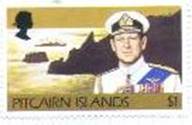 Inside #341: Pitcairn Island #172O
Inside #341: Pitcairn Island #172O
1977
HRH Prince Philip with St Paul's Rock and the Royal Yacht Britannia.
Prince Philip visited Pitcairn in February 1971 (With HMAV Bounty).
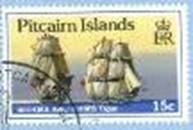 Inside
#342: Pitcairn Island #300O
Inside
#342: Pitcairn Island #300O
1988
HMS Briton and HMS Tagus. First British vessels to visit Pitcairn after
settlement by the mutineers.
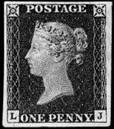 Inside #342: G.B. #1O
Inside #342: G.B. #1O
The
History of Pitcairn's postal service from: http://www.stamps.gov.pn/
Without long explanations all that can be said of Pitcairn's postal
service during the nineteenth and early twentieth centuries is that it was
irregular and unorganized. There being no postage stamps, mail from
Pitcairn was often handed to the captains of passing
ships who paid for the onward postage upon reaching their first port of
call. Frequently such letters carried a hand-stamped cachet "Posted
in [or at] Pitcairn Island / No Stamps Available".
Attempts were made by the British
early in the twentieth century to organize a postal service through the British
Consul in Tahiti but only small quantities of mail appear to have been
carried. Probably the most helpful measure was that introduced on a
semi-official basis by Mr. Gerald Bliss, postmaster in the Panama Canal Zone,
shortly after the canal opened in 1915. Mr. Bliss acted as unofficial
agent for the inhabitants of Pitcairn for a number of years and his office
became a clearing station for Pitcairn Island mail.
A number of visiting government administrators having
pointed out over the years the disadvantages stemming from the lack of a postal
service, it was agreed by the British and New Zealand governments in 1921 that
both countries would accept and deliver unstamped mail from Pitcairn. The
concession consisted of a waiving of the normal double surcharge on unstamped
letters and reverting to the earlier postal system whereby the receiver paid
for the mail.
In time, abuses of the system (passengers in passing ships
were reputedly putting mail ashore for onward transmission under the "no
stamp" system) led to New Zealand Post Office authorities withdrawing the
concession in May 1926. There followed a period of twelve months when
Pitcairn was once again without an authorized postal service.
This unhappy state of affairs ended on 7 June 1927, when an
agency was established on Pitcairn for the sale of New
Zealand stamps. Thus, until 14 October, mail dispatched from Pitcairn
bore New Zealand postage stamps covered by cancellations reading "Pitcairn
Island/NZ Postal Agency".
Largely as a result of
recommendations made by Mr. J S Neill, a Colonial Office employee sent out in
1937 to report on and suggest improvements for the form of government on
Pitcairn, official notice was given on 30 April 1940 of the establishment of a
Post Office on the island. In due course this led to the closing of the
NZ Post Office Agency on 14 October 1940 and the opening the following day of
the Pitcairn Islands Post Office with the release of the first Pitcairn Islands
stamps. This consisted of the eight designs making up the definitive
issue that remained on sale until July 1957.
Designs for this set incorporate stamps on stamps.
One definitive stamp from each decade since 1940 has been
selected to represent Settlement, Education, Communication, Royalty and
Ships.
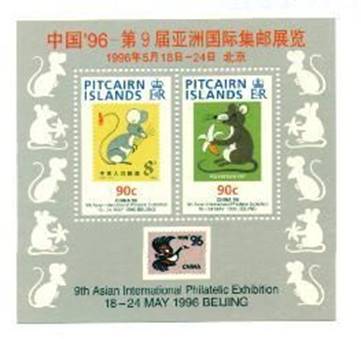
Scott: #452P
Issued: 17.5.1996
CHINA '96, 9th Asian Intl. Philatelic Exhibition
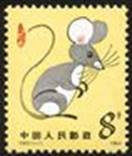 Inside #452: People’s Republic of China #1900O
Inside #452: People’s Republic of China #1900O
Jiazi
Year (Year of the Rat)
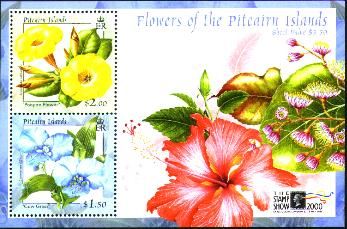
Scott: #520aO
Issued: 22.5.2000
Stamp Show 2000 Exhibition
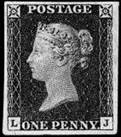 Inside #520a (In margin of sheet-logo): G.B #1O
Inside #520a (In margin of sheet-logo): G.B #1O

Scott: #790a-dO
Issued: 11.12.2014
75th Anniversary of the Adm. Byrd Visit to Pitcairn
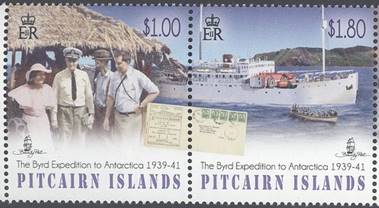
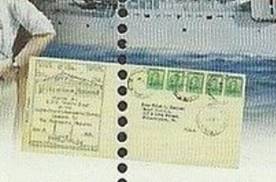

 Inside #790b: New Zealand #226P
Inside #790b: New Zealand #226P
Lou wrote: In 1939, the post
office on Pitcairn was run by a New Zealand Postal Agency, and a limited supply
of New Zealand stamps was kept on hand to cover the needs when a ship made a
call on the island and took on mail. When Byrd and his vessel stopped at
the island to take on water supplies, the agency and some members of the ship's
crew, with Byrd's approval, created a special printed cacheted
envelope to note the visit. The hundreds of letters the crew mailed as
souvenirs depleted the stock of stamps, so most of them went out without stamps
but marked that postage had been paid. The cover on
#790a-b is one of the few with stamps, and the strip of five are all New
Zealand #226.
Thanks to Attilio Papio and Lou
Guadagno
See also: http://www.stamps.gov.pn/ByrdExpeditionVisit.html


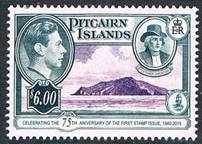
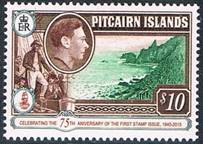
Scott: #798-807O
Issued: 15.10.2015
75th Anniversary of first Pitcairn Islands stamp


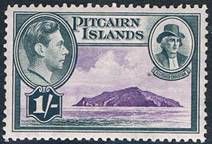
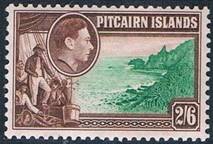
Inside #798-807: Pitcairn Islands #1O, #2O, #3O, #4O, #5O,
#5AO, #6O,
#6AO, #7O,
#8O
October 15 2015 is exactly 75 years since the Pitcairn
Islands released its first issue of postage stamps. The journey to get to this
stage was long and slow and began in 1887 when Pitcairn was
formally incorporated into the Empire under the British Settlements Act.
Officialdom refused to consider issuing stamps, even after a formal proposal
from a Mr Petch in 1905
when his design was presented to the Colonial Office.
Pitcairn mail did leave the Island, however, with the first known example being recorded in 1882 bearing a US stamp. Pitcairn was
"recognised" in 1921 when covers being sent
were impressed with a rubber handstamp inscribed: POSTED AT PITCAIRN ISLAND –
NO STAMPS AVAILABLE. In 1927 a postal agency was
established on Pitcairn by New Zealand authorities, after which NZ postage
franked most of the mail that left the Island.
The recognition for who was responsible for the first
stamps (eight definitives) is unknown. H.E.Maude, then Crown Commissioner for Pitcairn, spent time
on Pitcairn in 1940 and took a keen interest in the situation
and eventually set up the first Post Office. A.E.Fuller
of the GPO in Fiji, where Pitcairn postal affairs were to be
administered, was also involved. He in fact accompanied the first
shipment of stamps to Pitcairn in September 1940.
Dr Arthur Delaney, from his article
"Pitcairn’s First issue" (SPA Journal, Vol. 33, Nov. 1970), from whom
most of the background is taken and gratefully acknowledged, writes that the
inspiration for the first issuance of stamps must go to Karl Baarslag who visited Pitcairn in 1935 as a radio officer on
the yacht Vagabondia. He discussed with Andrew Young
(Pitcairn’s unofficial postmaster at the time) about Pitcairn possibly having
its own stamps. The Commissioner had turned down several petitions from the
Island but Baarslag gave details of a similar example
for the island of Barbuda in the West Indies. Young and the Chief Magistrate, Parkin Christian, then planned their strategy and Pitcairn had
its own stamps five years later.
The designs for the first issue also had a difficult
journey. A number of essays were submitted to the King
for approval but several were sent back for revision or rejected outright,
including an image of Fletcher Christian superimposed on a view of Bounty Bay.
(Christian did make it however on the 1d, 1/- and 2/6 stamps). These original
designs are now housed in the Royal Collection at
Buckingham Palace. The intent of the originators of Pitcairn’s first stamps was
to show the Bounty saga, although the link of the oranges shown in the ½ stamp
is somewhat dubious. All stamps incorporated the Bertram Park portrait of King
George VI as an inset. Other design points to note are the
inclusion of Christian and five mutineers (1d and 2/6 stamps) from the print
"The Mutiny on the Bounty" by Robert Dodd (1790), now in the
collection of William Dixon, NSW, Australia; the portrait of
Fletcher Christian (1/- stamp) (artist unknown) also in the Dixon
Collection; Bounty Bay (2/6 stamp) taken from the book "Pitcairn: The
Island, the People, and the Pastor" by the Rev. Thomas Murray (1855); John
Adams (1½d stamp) from the drawing by Capt. R. Beechey(1825).
The engraving was by H. Adlard who also engraved the
image of John Adams’ house shown in the 1½d stamp. Bligh’s image in the 2d stamp is from a sketch by J. Russell and engraved by Adlard and the Bounty was adapted from a still from the
first motion picture in 1935. The printing of the first definitive is also
interesting. The 1d, 3d and 2/6 stamps were printed by Bradbury, Wilkinson and
Co. Ltd. of London and were slightly smaller than the remaining values which were printed by Waterlow
and Sons Ltd. of New Malden. The entire series was recess engraved and printed
on paper watermarked with the multiple crown and script "C.A." of
Crown Agents.
A new
Post Office was constructed and the first definitives
went on sale on October 15 1940 and were withdrawn on July 1 1957.Eight reprintings were made during this
time. Sales were staggering - Maude and his wife stamped covers for 16 days
although the date stamp remained firmly on 15 Oct. 1940! After this it was destroyed to stop entrepreneurial Islanders from
profiting into the future.
In
1951 the original eight definitive stamps were joined by two
additional stamps featuring the original Bounty Bible (4d stamp) and the
Schoolhouse, as seen in 1949 on the 8d stamp. Both stamps were designed to fit into the definitive family look with
the King’s head inset as for the original designs. The Pitcairn Islands
Philatelic Bureau has added the two 1951 stamps to this issue giving the 2015 definitives a total of ten stamps.
This is to ensure most make up rates are covered (the 2007 definitives
featured 12 stamps) and to treat the 2015 release as a commemoration of the
"early" definitives in addition to the
"first" definitives.

The First Day Covers show early photographs of the Post
Office and staff, including Roy Clark. What is also interesting on these covers
are the two cachets shown. While the first likely cachet was of the schooner
Yankee, skippered by Captain Irving Johnson and used by the Islanders who
produced "home-made" covers featuring the new definitive, the first cachets specifically
prepared are known in philately as Types 12 and
13. The designer of Type 12 is unknown and all the text is with the type in
blue. Type 13 is thought to have been designed by R.H.
Mower of San Francisco, California. His cachet refers to Pitcairn as the Gem of
the South Pacific.
The
Philatelic Bureau is proud to both commemorate the 75th Anniversary of
Pitcairn’s first stamp issue and brings you the amended original designs that
are fitting for such an important occasion.
Thanks
to mike Knopfler
Best website related:
Pitcairn Island Philatelic
Bureau
![]()
Wish
List



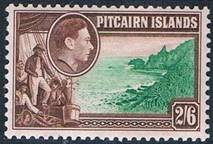
Pitcairn Islands #1, #2, #3, #4,
#5, #5A, #6, #6A,
#7, #8
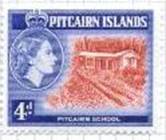
Pitcairn Islands #31
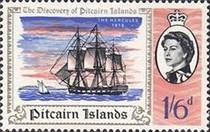
Pitcairn Is #71 for
Philippines
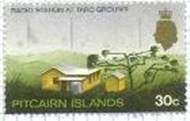
Pitcairn Island #108
![[Local Motives, type HE]](Pitcairn%20Islands_image006.jpg)
Pitcairn Is #171A
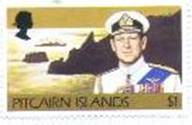
Pitcairn Island #172
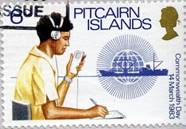
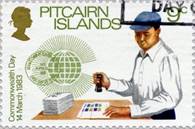
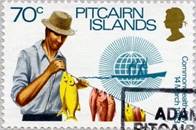
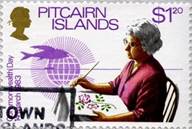
Pitcairn Island #221-224
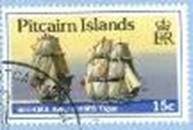
Pitcairn Island #300
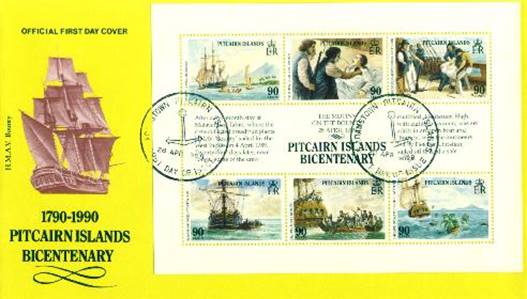
Pitcairn Island #321d for Isle of Man, Norfolk Island

Pitcairn Island #322, #322a, #322b, #322c

Pitcairn Is. #520a
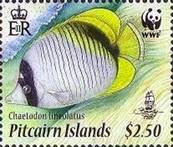
Pitcairn Is. #705d for Chad, Togo

Pitcairn Is. #790a-d


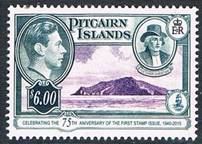
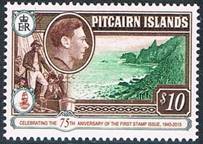
Scott: #798-807O

